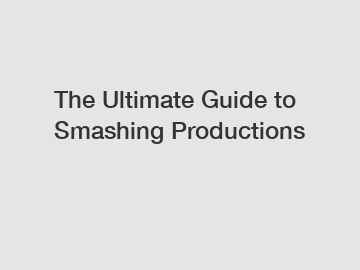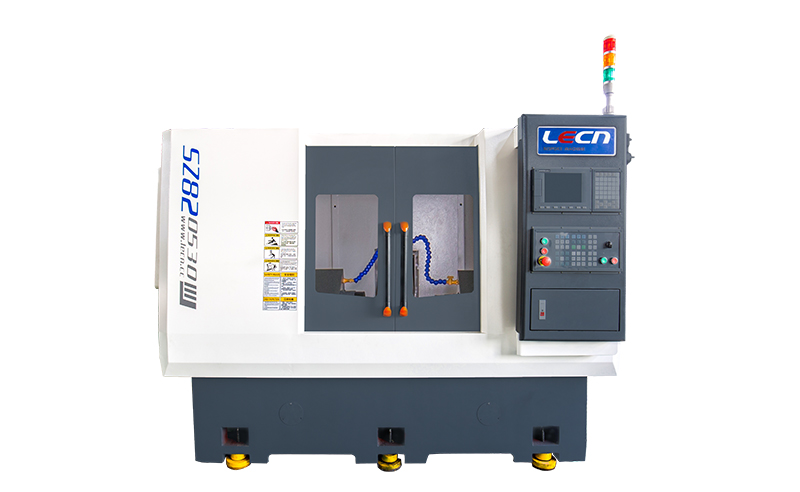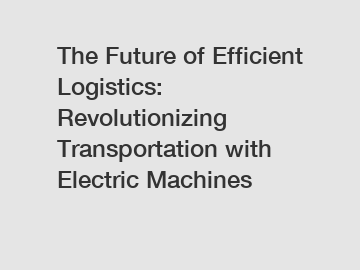Custom Metal Stamping | A Comprehensive Guide
Custom Metal Stamping | A Comprehensive Guide
Custom metal stamping is, by definition, designed exclusively for a specific part and its functions. Unlike mass-produced stampings, custom metal stamping is chosen when precision and complex dimensions are required to produce a unique part. This process requires the upfront development of a custom metal stamping tool that cuts and forms the part as the metal goes through the stamping press. Custom metal stampings can range from large components for automobiles and custom assemblies to micro-miniature parts for medical devices or electronics.
Techniques for Shaping Custom Metal Stampings
Stamping includes a variety of sheet metal forming processes consisting of either a single station operation where every stroke of the press produces the desired form of the metal part or could occur through a series of stages. The following techniques are used to achieve the desired shape in the press.
Bending
Bending creates a formed feature by angular displacement of a sheet metal workpiece. In some processes, one edge of the workpiece is clamped in a stationary position while the other edge is clamped by a metal tool and bent over a form to create a precise bend or shape. Alternatively, the metal piece may be pushed into or against a form.
Blanking
The blanking process removes a metal piece from the primary metal strip or sheet when it is punched through the strip/sheet. The material that is removed becomes the new metal workpiece or blank.
Coining
Coining is a forming process that uses an extreme amount of pressure to push the workpiece into a die. The die then forms the metal into a precise shape and creates permanent forms in the workpiece. Coining also smooths the edges of metal parts by striking them with a high degree of force. This removes existing burrs and hardens the metal. Coining may reduce the need for deburring, grinding, and other secondary processes at the end of the project, which saves both time and money.
Crash/Crush Forming
This process deforms the metal using only a punch and cavity. These dies do not control metal flow and cannot prevent the metal from wrinkling or buckling. They are used to form simple parts, such as brackets and braces, made from thick, stiff metals that are more wrinkle-resistant than thinner metals.
Cutting
One of the most common stamping operations, cutting trims the metal into a part by the use of extremely high force in the stamping press. Cutting operations include trimming, notching, piercing, blanking, lancing, and shearing.
Drawing
A complex drawing die is used to create large metal parts, such as automotive components. The process involves controlling the flow of metal into a cavity via a pressure-loaded draw pad to prevent wrinkling as the material flows over a forming punch.
Embossing
Embossing is a cold-forming process used for creating specific formations or designs on metal pieces. Male and female embossing components press a workpiece between them with sufficient force to form the three-dimensional feature.
Extruding
Extrusion forms the metal inside the diameter of a pierced hole, which may be used for applications such as holding fasteners during part assemblies.
Flanging
The flanging operation bends metal along a curved axis, which may be used to form a projection or the rim of a part as it relates to part assembly and stiffness requirements.
Forming
Metal stamping involves a variety of forming operations. The stamping press forms the metal material by applying tension, compression, or both. The specific type of forming operation selected depends on the material&#;s properties and the part&#;s critical dimensions, balancing formability and strength.
Ironing
Similar to the coining process, ironing employs compression to form the part by squeezing the metal along a vertical wall to achieve exact thickness and length dimensions.
Lancing
In order to free up metal without separating it from the metal strip, lancing slices or slits the metal, which may be used in progressive dies as a part carrier.
Piercing
This metal cutting operation, also called perforating, produces a hole in a formed part or sheet metal, which may be round, square or a custom shape. The slug is then discarded.
Pinch Trimming
Pinch trimming is a special method in which the vertical walls of a drawn or stretched vessel are cut by pinching the metal.
Punching
This forming process uses a punch press to force a tool, called a punch, through the workpiece/material to create a hole and produces a scrap slug that is deposited into the die below the sheet metal.
Restriking/Sizing
Used primarily after major forming operations are complete, restriking employs an additional station in the die to finish precision details such as small embossing and sharp radii.
Shaving
An operation used to eliminate or minimize die-break, while maximizing the amount of sheared edge. The general concept with shaving is to pre-punch the hole slightly smaller, then post-punch the hole to size, using a very tight die clearance. This can also be done on a straight or outside edge.
Shearing
Cutting force is applied perpendicular to the material, causing the material to yield and break.
Trimming
The trimming process achieves the specified profile of a stamped part by forming its perimeter or cutting away excess metal, with precision trimming designed to minimize scrap.
Custom Metal Stamping Production Methods
The method chosen for metal stamping production takes into account the complexity of the part and how metal stamping can best form that part. For precision parts with tight tolerances, the method may include the use of in-die sensors to continually monitor part quality, along with other inspection methods. The method also takes into account secondary operations, such as plating, heat treating, welding, and cleaning or sterilization.
Progressive Die Stamping
Progressive metal stamping is a stamping process that advances a metal strip from station to station performing different operations on the same part in the die until the part is complete. Conical-shaped pilots are inserted into pre-pierced holes in the strip to ensure the precision of the alignment as the part advances to guarantee the accuracy of the finished product. Since the part is attached to a metal strip throughout its formation, the entire process and parts will be out of tolerance if the strip is off by even a tiny fraction of an inch.
Progressive die stamping offers some advantages such as being a highly repeatable process and since the material is continuously fed into the stamping press, long production runs can be completed, producing more finished parts in less time resulting in lower cost per part.
Progressive Stamping Delivers High Speed Production and Lower Costs.
Transfer die stamping
Transfer die stamping uses one press to operate multiple tools. The part is removed from its metal strip so that it can be freely transferred. A part, which can be turned or rotated, is shaped by each station until it is complete. Automation of the transfer process streamlines the operation into a single press.
Transfer dies can handle many part features in one press pass, such as holes, cut-outs or threading, which can eliminate costly secondary operations.
Transfer die stamping is typically used for large parts like frames, tube applications, draws, shells, and structural components.
Is Progressive Die Stamping or Transfer Die Stamping Best for Your Next Precision Metal Stamping Project?
Goto Aomate to know more.
Explore more:Which Surprising Tasks Can a Handheld Laser Cleaner Tackle?
Unlocking the Secrets of Weigher: Your Comprehensive Guide to Accurate and Effective Weight Measurement!
Ultimate Guide: Designing Efficient Heating Coils - Solve Your High Energy Bills!
Revolutionizing Chemical Barrel Production: Automatic Extrusion Blow Molding
Is Ozone Generator the Game-Changer for Sustainable Aquaculture?
Which Metal Gasket Material is Your Best Bet?
Which Electric PCP Pump is Worth the Hype?"Or"How Can an Electric PCP Pump Revolutionize Shooting Sports?
Deep Drawing
Beneficial for applications requiring recessed cavities, where the depth of the drawn part exceeds its diameter, deep drawing uses blanking, swaging or sizing to deform the base material and apply recessed features.
Fine Blanking
Fine blanking is optimal for parts that require very smooth, precise edges or exceptional flatness. Fine blanking is particularly suitable for moving parts such as gears. Fine blanking is a combination of metal stamping and cold-metal extrusion techniques, requiring special presses.
Progressive Stamping vs. Fine Blanking: Three questions OEMs Should Ask
Multi-slide / Four-slide Stamping
Multi-slide / Four-slide stamping is best suited for fabricating complex components that have numerous bends or twists and for forming wire. The difference between multi-slide and four-slide is that four-slide metal stamping machines have four moving slides while multi-slide machines have more than four slides. The slides or rams in the machines strike the material to produce the finished parts.
Multi-slide / Four-slide equipment can manufacture complicated parts with multiple, complex, or over 90° bends and twists including clips, brackets, flat springs, terminals, retainers, and wire formed parts. Both flat and round materials can be formed.
L E A R N M O R E
Top 5 Factors to Consider When Choosing Metal Stamping
Top 5 Factors to Consider When Choosing Metal Stamping
When selecting a metal stamping supplier, several critical factors should be considered to ensure you choose the right partner who meets your specific requirements and standards. Here are the top 5 factors to consider:
1. Expertise and ExperienceThe first and foremost factor to evaluate is the expertise and experience of the metal stamping supplier. Look for a supplier with a proven track record in the industry, preferably with extensive experience in producing metal-stamped components similar to your needs. A supplier with deep expertise is more likely to offer reliable advice, efficient production processes, and high-quality outputs. like Vertexnique gained 10+ years of experience in metal stamping, it would be a considerable supplier in China.
2. Capabilities and TechnologyAssess the capabilities and technological capabilities of the supplier. Modern metal stamping involves advanced machinery and techniques such as CNC (Computer Numerical Control) stamping, progressive die stamping, and robotic automation. Ensure that the supplier has the necessary equipment and technology to handle your project requirements effectively. This includes checking their ability to work with different materials, thicknesses, and complex geometries.
3. Quality Control and CertificationsQuality is paramount when it comes to metal-stamped components, especially in industries like automotive, aerospace, and electronics. Verify the supplier&#;s quality control processes and certifications such as ISO or AS. These certifications demonstrate their commitment to maintaining consistent quality standards and adhering to industry best practices. Additionally, inquire about their inspection protocols, testing capabilities, and adherence to specific regulatory requirements if applicable.
4. Cost and PricingWhile cost should not be the sole determining factor, it is crucial to consider pricing and cost competitiveness when choosing a metal stamping supplier. Compare quotes from multiple suppliers and evaluate the overall value proposition they offer, taking into account factors like quality, lead times, and additional services (e.g., tooling, secondary operations). A supplier offering competitive pricing without compromising on quality can provide long-term cost savings and efficiency benefits.
5. Customer Support and CommunicationLastly, evaluate the customer support and communication practices of the supplier. Effective communication is essential for successful collaboration throughout the project lifecycle, from initial design discussions to post-production support. Consider factors such as responsiveness, transparency in project updates, and willingness to accommodate your specific requirements or changes. A supplier who values clear communication and provides proactive customer support can contribute significantly to project success.
By carefully evaluating these factors&#;expertise, capabilities, quality control, cost, and customer support&#;you can make an informed decision when choosing a metal stamping supplier that aligns with your operational needs and quality standards.
Contact us to discuss your requirements of metal stamping equipment. Our experienced sales team can help you identify the options that best suit your needs.
Transforming Aluminum Fabrication: Cutting-Edge Spinning Solutions
Which Lithium Battery Testing Equipment Offers the Best Value for the Purchase Stage?
Exploring Cutting-Edge Radiation Detection Technologies Today
Which laser cutter offers the best metal cutting capabilities?
Are Used Komatsu PC200-6 Hydraulic Pumps Worth the Investment?
The Ultimate Guide to 50m3 Vertical Low Temperature Storage Tank
Which motor 8 brand offers the best features for B2B buyers?










